Singapore's Sporting Greats
Chua Chong Jin recalls the glory and achievements of some of Singapore’s greatest athletes.
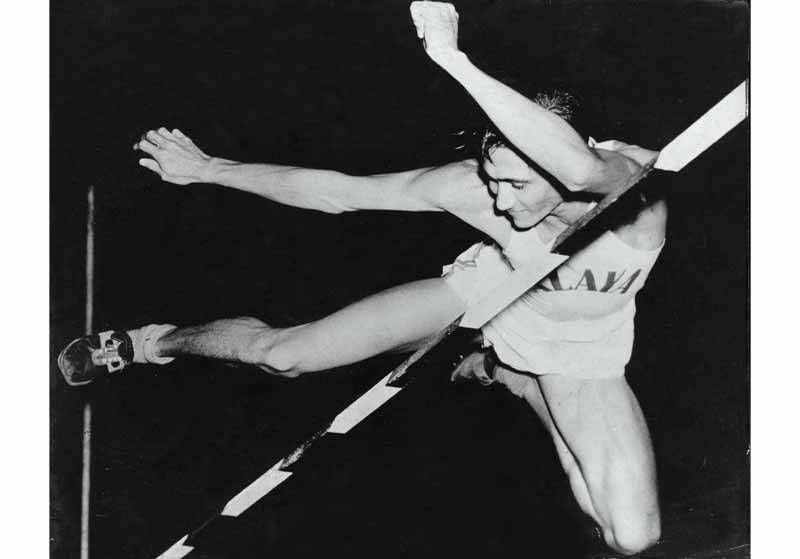 High-jumper Lloyd Valberg was the first athlete to represent Singapore at the Olympics – the 1948 London games. Courtesy of Sport Singapore.
High-jumper Lloyd Valberg was the first athlete to represent Singapore at the Olympics – the 1948 London games. Courtesy of Sport Singapore.
Who first put Singapore on the world’s swimming map? For most Singaporeans, the obvious answer would be Ang Peng Siong. Ang created a sensation when he became the world’s fastest swimmer in 1982 after clocking 22.69 seconds in the men’s 50-metre freestyle event at the United States Swimming Championships in Indianapolis that year.
Olympian Feats
In reality, just as the legendary Ang paved the way for today’s stars like Joseph Schooling and Tao Li, he was riding on an earlier wave created by someone almost unheard of today – Singapore’s original “Flying Fish” Neo Chwee Kok. Born here in 1931 and raised in Pulau Sambu, Indonesia, Neo started competing for Singapore in 1947.
Neo’s big breakthrough was at the 1951 Asian Games in New Delhi where he clinched four gold medals. The “Freestyle King” then competed in the 1952 Helsinki Olympics. By 1953, he was already widely regarded as among the world’s best. This was evident in 1954 when he took part in a 100-metre freestyle race in Singapore, narrowly losing to Australian star Jon Henricks, who later went on to clinch gold at the 1956 Melbourne Olympics.
For sports fans of Neo’s generation, his star appeal was evident: in those media-starved days, it was affirmed by an enduring image – a picture of him shaking hands with the first prime minister of India, Jawaharlal Nehru, as the latter paid homage to the Singapore contingent during the Asian Games in New Delhi.
Neo was but one of the pioneers of Singapore sports who left their indelible mark at a time when institutional support was practically non-existent. There were others like him. Leading the way was weightlifter Tan Howe Liang who won a much-coveted silver medal at the 1960 Rome Olympics. It would take another 48 years before Singapore’s women’s table tennis team clinched a silver medal at the 2008 Beijing Olympics – a telling detail reflecting the rarity and magnitude of Tan’s feat, which he achieved under most unfavourable circumstances.
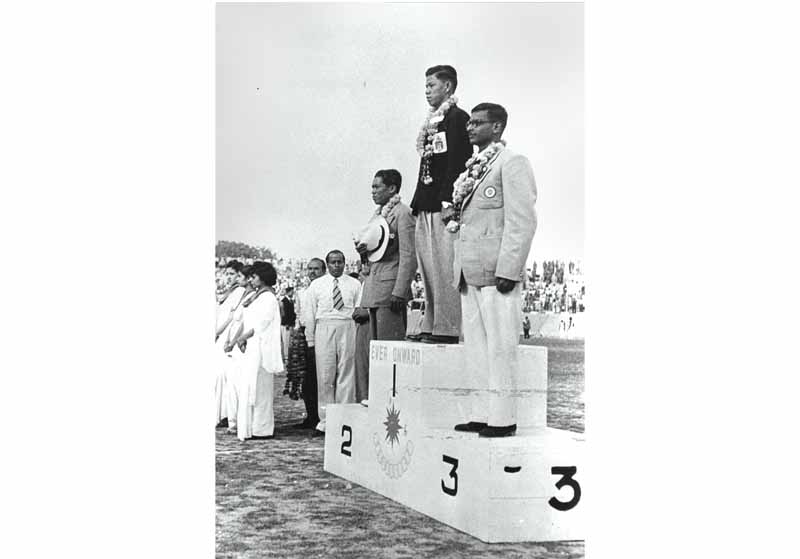 Singapore’s “Flying Fish” Neo Chwee Kok won four gold medals at the 1951 Asian Games held in New Delhi. Courtesy of Sport Singapore.
Singapore’s “Flying Fish” Neo Chwee Kok won four gold medals at the 1951 Asian Games held in New Delhi. Courtesy of Sport Singapore.
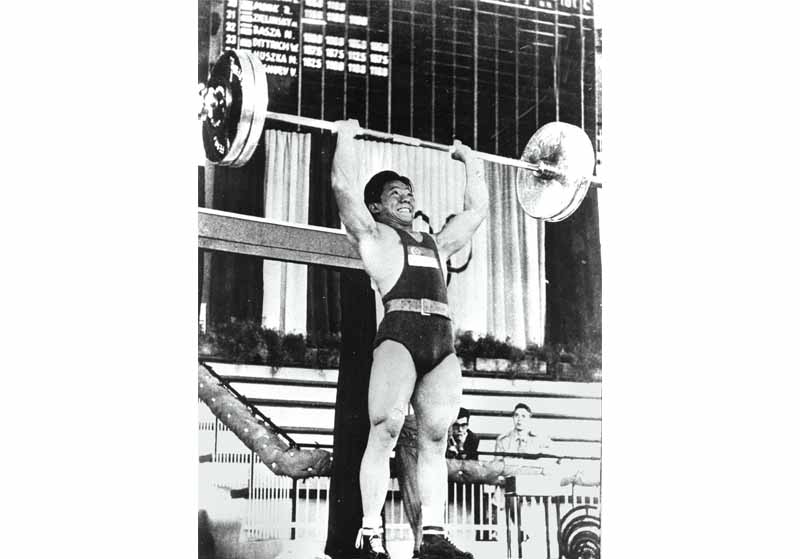 Weightlifter Tan Howe Liang won Singapore’s first Olympic medal, a silver, at the 1960 Rome Olympics. Courtesy of Sport Singapore.
Weightlifter Tan Howe Liang won Singapore’s first Olympic medal, a silver, at the 1960 Rome Olympics. Courtesy of Sport Singapore.
His was a poignant story about how a boy from Swatow, China, and then Chinatown, Singapore, made good on the international stage. Competing in the lightweight category in Rome, Tan – suffering cramps and writhing in agony – defied doctors’ advice to quit. Instead, he persevered and was rewarded with a silver medal – behind Russia’s Viktor Bushuyev but ahead of Iraq’s Abdul Wahid Aziz. Tan – who had made personal sacrifices without expectations of reward in an era when athletes pursued sports purely out of passion – was a true sports hero of his time.
In track and field, athletes like high-jumper Lloyd Valberg and hurdler Ng Liang Chiang led the way with their pioneering spirit. As the world emerged from the ashes of World War II, Valberg carved his own little history by representing Singapore – not yet a nation and still a crown colony under British rule – at the 1948 London Olympics. The firefighter with his trademark goatee had to make do without a coach or proper equipment but nothing could take away his pride as he competed against the world’s best at Wembley Stadium. Although Valberg did not have a podium finish, he holds the distinction of being the first athlete to represent Singapore at the Olympics.
Ng made an impact at the 1951 Asian Games in New Delhi, India, winning gold in the 110-metre hurdles and bronze in the 400-metre hurdles. When he mounted the winners’ rostrum, the Indians – who had earlier rejoiced with him following his success – booed him off the track. Fortunately, it wasn’t personal. Apparently, the organisers had played “God Save The Queen”, the British national anthem. Clearly this didn’t go down well with the patriotic locals who had just gained independence from colonial rule. Such were the rough and tumble ways of the sporting community emerging in this part of the world then.
Not to be left out, Tang Pui Wah made a compelling case for female athletes. The daughter of a soya sauce maker and his wife, Tang became Singapore’s first woman Olympian when she competed in the 100-metre sprint and 80-metre hurdles at the 1952 games in Helsinki, Finland. The cold weather, huge crowds, unfamiliar track and lack of proper coaching worked against her in this international setting and she did not do as well as she had hoped. Still, competing at a time when most girls stayed away from sports, the Asian Games bronze medallist was a pioneer and role model for aspiring sportswomen, alongside sprinters Mary Klass and Janet Jesudason who took part in the 1956 Melbourne Olympics.
The 1940s and 1950s: Athletes Par Excellence
These prominent examples aside, the 1940s and 1950s also yielded some of Singapore’s most colourful sports personalities. In football, there were goalkeeper Chu Chee Seng – who was renowned for his reflexes and agility – and Chia Boon Leong, a crafty midfielder nicknamed “Twinkle Toes” famous for his dribbling and passing. They were the driving force behind the Singapore team that won the Malaya Cup for three years in succession: in 1950, 1951 and 1952.
Badminton produced the indomitable Wong Peng Soon, arguably Singapore’s greatest athlete. In 1950, the fierce competitor known for his court craft and graceful footwork became the first Asian to win the All-England Championships, and repeated the feat in 1951, 1952 and 1955. He was also a member of the victorious Malayan Thomas Cup teams of 1949, 1952 and 1955. Disciplined and meticulous, Wong was an athlete ahead of his time – a professional who did not let success get to his head. During the arduous 28-day steamship journey to the 1949 Thomas Cup tournament in Preston, England, for example, he and his teammates found ways to maintain their fitness by training on board the ship.
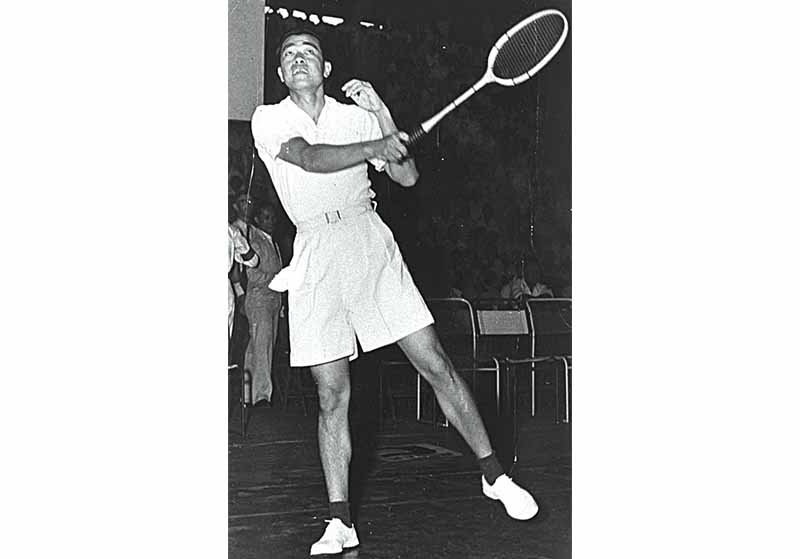 Shuttler Wong Peng Soon was the first Asian to win the All-England Championships in 1950. Courtesy of Sport Singapore.
Shuttler Wong Peng Soon was the first Asian to win the All-England Championships in 1950. Courtesy of Sport Singapore.
In water polo, there were the Tan brothers – Eng Chai, Eng Bock and Eng Liang. Their story began in the 1930s with their father Tan Wee Hong, who lived near Pasir Panjang and joined the now-defunct Tiger Swimming Club where he played water polo. For Eng Bock and Eng Liang, taking part in the 1956 Melbourne Olympics together marked a high point in their sports careers. Eng Liang – who later became Singapore’s first Rhodes scholar and earned a doctorate in chemistry from Oxford University – recalls, “From the sweat and tears shed in training, to the glorious moment of marching at the opening ceremony, to the deep friendships made… my memories of Melbourne are truly ones that I will always cherish.”
Then there was Singapore’s only quadruple athlete Arumugam Vijiaratnam who, between 1946 and 1956, represented the country in football, hockey, cricket and rugby. Guided by a desire to “reach the pinnacle” in whatever he pursued, the former Victoria School boy – who was an early example of someone who balanced sports and studies admirably – also represented Singapore in hockey at the 1956 Melbourne Olympics.
The 1960s and 1970s: The Golden Age of Sports
The 1960s and 1970s marked the beginning of the nation’s fascination with swimming. Much had to do with the phenomenal success of the Chan family. For instance, on 20 April 1965, siblings Alex, Roy and Patricia – the children of legendary swimming coach Chan Ah Kow – made news when they captured 12 out of Singapore’s 14 gold medals at the first Malayan Junior Swimming Championships.
Patricia in particular went on to distinguish herself with her amazing exploits in the pool, earning her the nickname “Golden Girl”. In all, she won 39 gold medals between 1965 and 1973 over five successive Southeast Asian Peninsular (SEAP) Games, now known as the SEA Games. Her achievement at the 1965 SEAP Games in Kuala Lumpur as an 11-year-old, where she captured eight gold medals, was especially significant. Her feat, coming only a few months after Singapore’s independence, rallied the new citizens together as the national anthem “Majulah Singapura” was sung in the sports arena for the first time.
Patricia also won three silvers and four bronzes at the 1970 Asian Games in Bangkok and swam in two Olympics – Mexico in 1968 and Munich in 1972. Remarkably, she was named Sportswoman of the Year for five consecutive years from 1967 to 1971. The dedication of the Chan family to swimming was legendary – with fascinating stories that captured the imagination of the public, including the playful tale of how the siblings would often climb over the locked gates of the Chinese Swimming Club in Katong for their pre-dawn training.
Following in the footsteps of Patricia were sisters Elaine and Junie Sng, daughters of an artist and a teacher. Junie, a former student of the Convent of the Holy Infant Jesus at Victoria Street, took the term “Golden Girl” to a whole new level, winning two gold medals at the 1978 Asian Games in Bangkok. In the 400-metre freestyle, she clocked 4:31.50 to edge out Japan’s Kano Kamo (4:32.86) and Thailand’s Rachaneewan Bulakul (4:34.08). In another blow to the mighty Japanese team, she then took the 800-metre freestyle title, clocking 9:18.33 to beat Kamo (9:22.48) and her teammate Megumi Tochihara (9:29.43). In total, Junie – adored as much for her girl-next-door appeal as for her success in the pool – won 38 SEA Games golds, leaving her indelible mark as one of Singapore’s iconic names in sports.
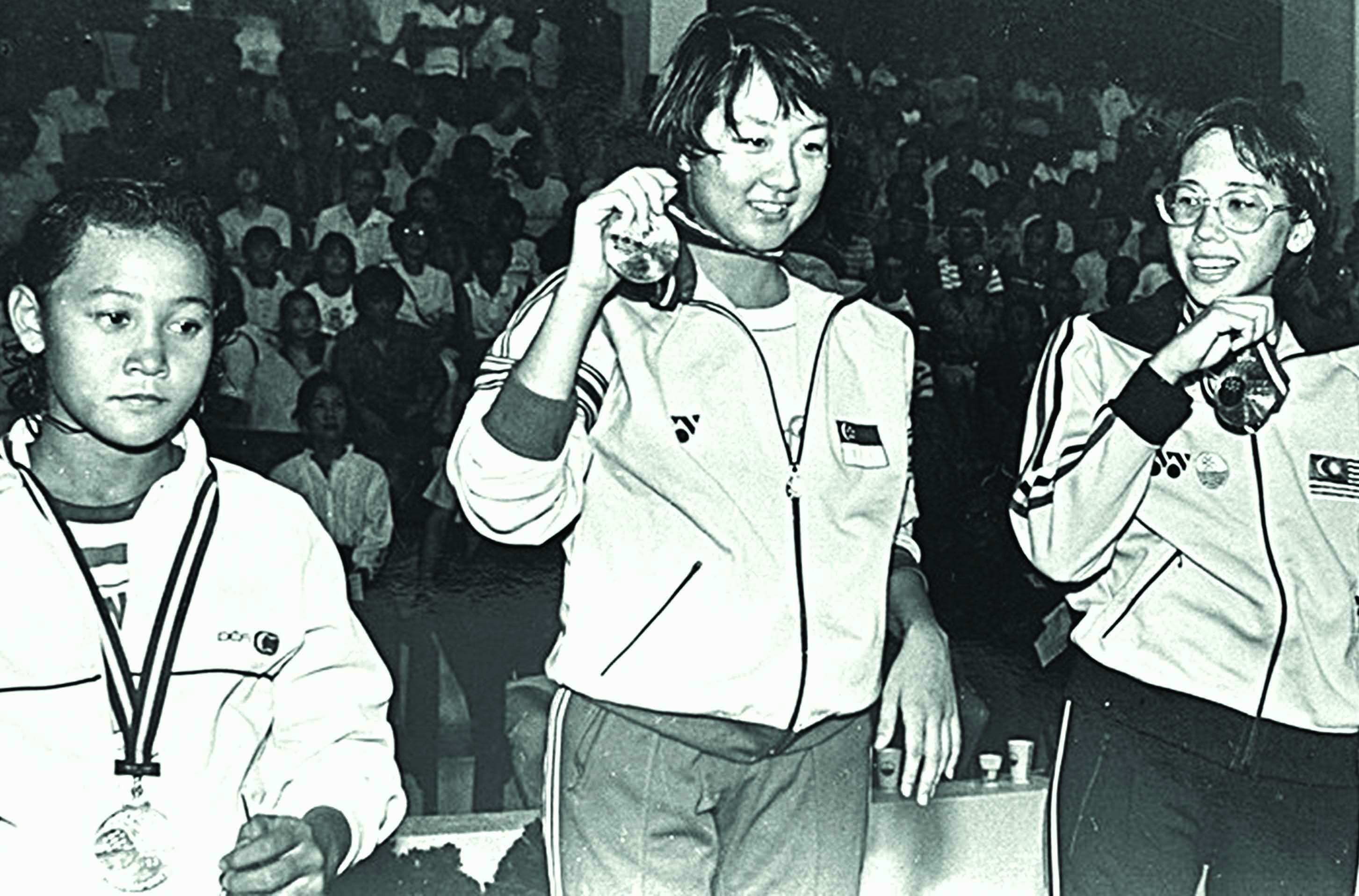 “Golden Girl” Junie Sng won 38 Southeast Asian Games gold medals over the course of her swimming career. Courtesy of Sport Singapore.
“Golden Girl” Junie Sng won 38 Southeast Asian Games gold medals over the course of her swimming career. Courtesy of Sport Singapore.
The 1960s and 1970s were also the age of supremacy in local athletics, with C. Kunalan, Chee Swee Lee and K. Jayamani giving Singapore some of its finest sporting moments. Kunalan just missed winning gold in the men’s 100-metre sprint at the 1966 Asian Games in Bangkok as he was edged out by Malaysia’s M. Jegathesan in a photo-finish. In all, he won five Asian Games and 14 SEA Games medals in a career spanning over a few decades.
Trained by coach Patrick Zehnder, Chee delivered one of the most spectacular performances in the history of local athletics to win the gold medal in the women’s 400-metre race at the 1974 Asian Games in Tehran, Iran. She set a new games record with her time of 55.08 seconds and became the first Singaporean woman to win an athletics gold at the games.
Jayamani achieved SEA Games success in distance running but part of the interest in her story stemmed from the unique, heartwarming relationship she had with her coach Maurice Nicholas and his family. Jayamani recalls, “Maurice often went beyond the duties of a conventional coach to embrace me as family. When I stayed with the family, his wife Elizabeth would treat me as her own daughter. Although she was sometimes strict with me, she showered me with lots of care. She would cook meals like her famous herbal chicken for me to ensure I had the proper nutrition to keep up with the harsh demands of training. I also formed a close bond with their daughters, Michelle and Sharon. They were like family to me.” Indeed, this was an era when coaches often went way beyond their roles as coaches to become mentor, friend and even parent to some of their charges.
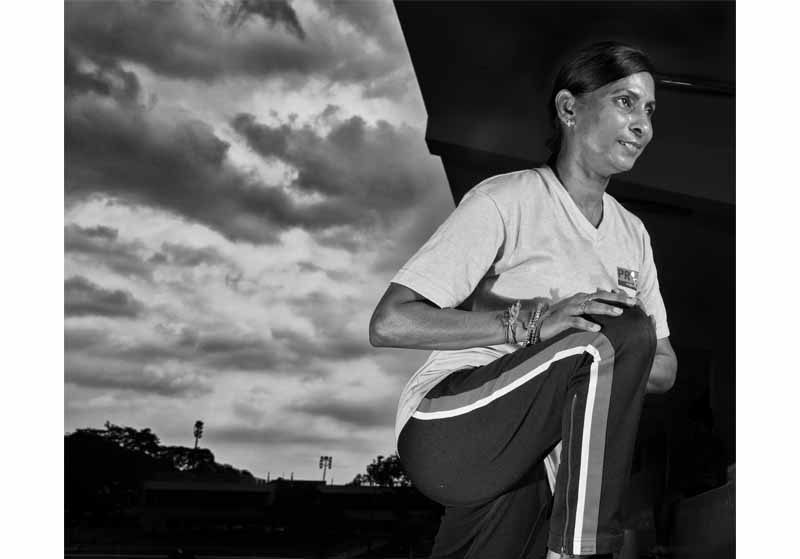 K. Jayamani won gold in the 1983 Southeast Asian Games marathon held in Singapore. Courtesy of Singapore National Olympic Council, image by Danny Toh from the book 50est: Stirring Stories For The Singapore Soul.
K. Jayamani won gold in the 1983 Southeast Asian Games marathon held in Singapore. Courtesy of Singapore National Olympic Council, image by Danny Toh from the book 50est: Stirring Stories For The Singapore Soul.
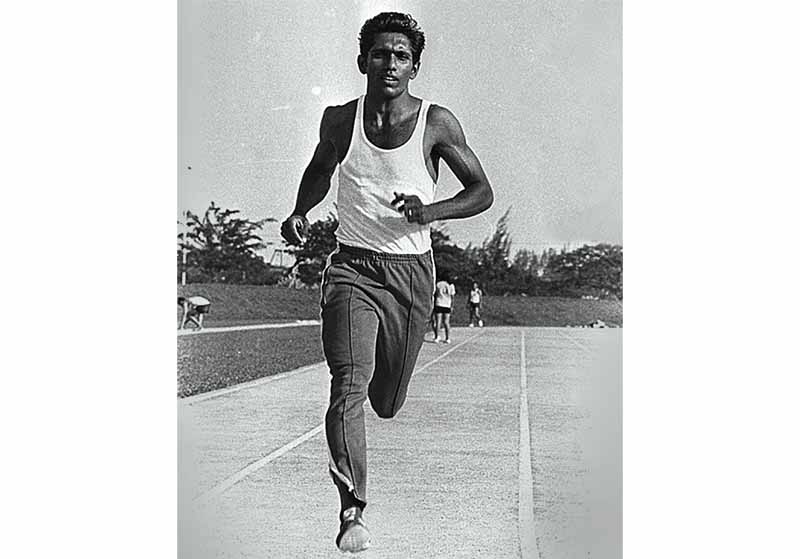 C. Kunalan (1970s). He won five Asian Games and 14 SEA Games medals in a career spanning over a few decades. Courtesy of Sport Singapore.
C. Kunalan (1970s). He won five Asian Games and 14 SEA Games medals in a career spanning over a few decades. Courtesy of Sport Singapore.
Other athletes who made their mark during this “Golden Era” included distance runner P. C. Suppiah, who famously ran without shoes at the 1972 Munich Olympics; high-jumper Noor Azhar Hamid; sprinters Glory Barnabas and Yeo Kian Chye; and hurdlers Heather Siddons and Osman Merican.
For this entire generation of athletes, sports was a passionate pursuit undertaken without expectation of reward. If there were returns, they were not the monetary kind that today’s athletes enjoy. For instance, Osman Merican remembers with immense pride a signed letter he received from former Prime Minister Lee Kuan Yew when he returned from the 1965 SEAP Games in Kuala Lumpur with three medals. In the letter, Lee, praising the former police constable, wrote, “I would like you to know that your performance brought into focus the qualities of discipline, stamina and talent which will enable the people of Singapore to overcome so many of their present difficulties and secure our future as a nation.” Given the uncertainty of the times following Singapore’s separation from Malaysia just months earlier that year, this was especially significant. Even then, the role of sports as a unifying force for a disparate people taking modest steps towards true nationhood could be felt.
The 1970s was also a time when other sports started to make their mark. Boxing, for instance, had a worthy ambassador in Syed Abdul Kadir. Growing up watching boxing telecasts on television, the former St Andrew’s School student was fascinated with images of American heavyweight boxer Joe Louis raising his arms in victory. A love affair with boxing started and it took Kadir – a gold medallist at the 1971 SEAP Games – all the way to the 1972 Munich Olympics. There, a sensational victory over an Italian boxer was followed by a defeat against a Cuban adversary in a match that left Kadir reeling with a gash on the side of his head. Undeterred, he put the disappointment behind him, kept going and was subsequently rewarded with a bronze medal at the 1974 Commonwealth Games in New Zealand.
Bowling too started to gain popularity, with the likes of Henry Tan and Adeline Wee giving it a boost with their international success. Tan, for instance, won silver medals at the 1970 World Cup in Copenhagen and the 1975 World FIQ Championships in London, where he also set a then-world record high game of 298. These achievements earned him the Sportsman of the Year award twice – in 1971 and 1976. No mean feat for someone who, due to financial constraints, could not afford the fees at the now-defunct Jackie’s Bowl at Orchard and had to improvise and make do with the humble cement factory where he worked as his training ground. Among other things, Tan had made his own ball and drew arrows in an open area of the factory to mimic a bowling lane.
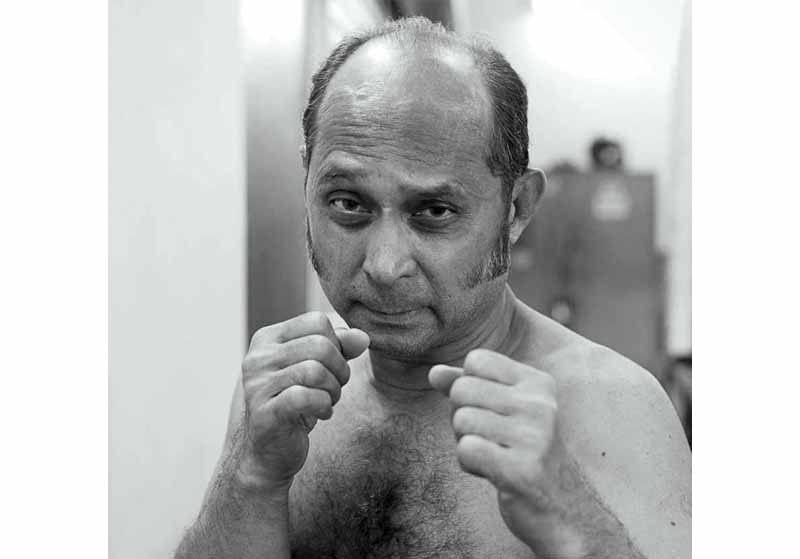 Growing up, Syed Abdul Kadir was inspired by American heavyweight boxer Joe Louis. He won a bronze medal at the 1974 New Zealand Commonwealth Games. National Library Board.
Growing up, Syed Abdul Kadir was inspired by American heavyweight boxer Joe Louis. He won a bronze medal at the 1974 New Zealand Commonwealth Games. National Library Board.
The 1980s: The “Kallang Roar”
The momentum continued into the 1980s, with Adeline Wee clinching gold in the Ladies’ Masters at the 1985 World Games in London. Memorably, she was treated to a grand homecoming when a Rolls Royce chauffeured her from Changi Airport to Kallang Bowl for a rousing reception – a reflection of bowling’s increasing appeal as a sport even though there were some who questioned its lack of physical exertion compared to more traditional sports. The warm welcome for this sports heroine and others like her was also a telling, heartening sign of how a nation, long obsessed with just academic and career excellence, was slowly but surely coming to terms with sporting glory.
Another lesser-known sport quick to make its mark on the sporting landscape in Singapore in the 1980s was squash. With players like Zainal Abidin and Peter Hill, the Republic proved that it was a force to be reckoned with, finishing an impressive sixth at the 1985 World Team Championships in Cairo, Egypt.
Making a revival of sorts was men’s swimming, with Ang Peng Siong and David Lim taking the sport to dazzling heights. Famously, Ang clocked the world’s fastest time in 1982 for the men’s 50-metre freestyle event. That year, he also won gold for the 100-metre freestyle at the Asian Games in New Delhi. This was followed by his win in the consolation final of the 100-metre freestyle at the 1984 Los Angeles Olympics. “Backstroke King” Lim too was making a name for himself with his gold rush at the SEA Games and his credible 14th placing for the men’s 100-metre backstroke at the 1988 Seoul Olympics.
In 1983, Singapore Broadcasting Corporation (now MediaCorp) produced the television drama series《小飞鱼》(“The Little Flying Fish”) which followed the trials of an aspiring teenage swimmer. It was the beginning of an era when the line between sports and entertainment became more blurred as telegenic athletes such as Ang and Lim came to be viewed as stars in their own right. “Those were thrilling times for Singapore sport. There was a growing sense that people could be drawn to athletes as stars. But first, we had to produce the results,” recalls Ang.
Meanwhile, football in Singapore scaled new heights in terms of fan support, with the likes of Dollah Kassim, S. Rajagopal, Quah Kim Song and Mohammad Noh becoming household names. They were famously associated with the euphoria of the “Kallang Roar” and paved the way for the rise of Singapore football’s first superstar Fandi Ahmad, whose illustrious career has been much chronicled.
 Ang Peng Siong clocked the world’s fastest time for the men’s 50-metre freestyle event at the United States Swimming Championships at Indianapolis in 1982. Courtesy of Singapore National Olympic Council, image by Danny Toh from the book 50est: Stirring Stories For The Singapore Soul.
Ang Peng Siong clocked the world’s fastest time for the men’s 50-metre freestyle event at the United States Swimming Championships at Indianapolis in 1982. Courtesy of Singapore National Olympic Council, image by Danny Toh from the book 50est: Stirring Stories For The Singapore Soul.
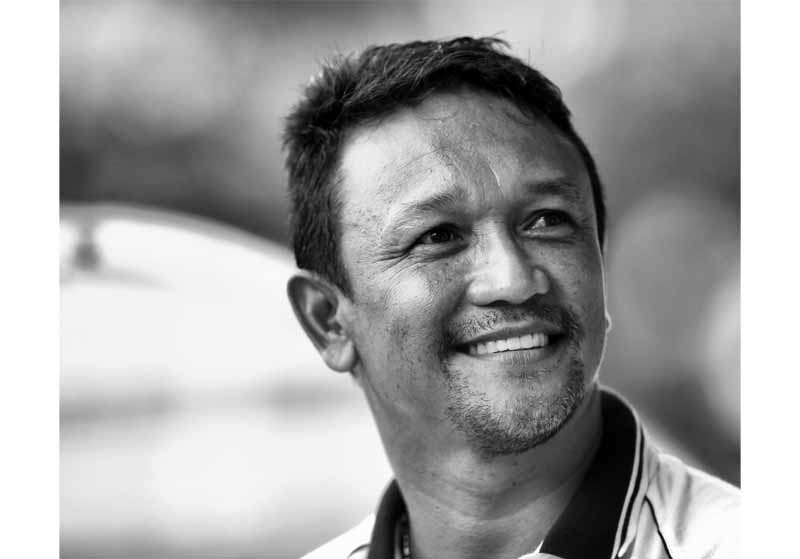 Singapore’s most famous footballer Fandi Ahmad scored the winning goal that resulted in Singapore winning the Malaysia Cup in 1980. Courtesy of Singapore National Olympic Council, image by Danny Toh from the book 50est: Stirring Stories For The Singapore Soul.
Singapore’s most famous footballer Fandi Ahmad scored the winning goal that resulted in Singapore winning the Malaysia Cup in 1980. Courtesy of Singapore National Olympic Council, image by Danny Toh from the book 50est: Stirring Stories For The Singapore Soul.
The 1990s and Beyond: Striving for Professionalism
The dawn of the 1990s brought to the fore two sports in particular – shooting and sailing – even as the likes of swimming, athletics and football continued to enjoy the limelight. Sailing’s status received a big boost when Benedict Tan, combining sports and studies as well as career admirably, clinched gold in the 1994 Asian Games in Hiroshima, Japan. He became a convincing spokesman for the bold belief that Singapore‘s athletes, defying the nation’s cultural bias towards non-sports pursuits, could compete at the highest level if they were disciplined and meticulous in their approach towards excellence. Indeed, the medical doctor’s fine example paved the way for many sailors. As a result, sailing in Singapore now enjoys success at the international level. For instance, at the 2014 Youth Olympic Games in Nanjing, China, Bernie Chin and Samantha Yom clinched gold medals, while Colin Cheng performed commendably at the 2012 London Olympics.
Lee Wung Yew – increasingly a force in the regional scene following his debut at the 1985 SEA Games in Bangkok – became shooting’s poster boy (and then man) in a career spanning more than two decades. It was a career that would take him to three Olympics, six Asian Games and 11 SEA Games. More significantly, his success led the way for a new generation of shooters, including today’s stars such as Martina Lindsay Veloso and Jasmine Ser. Lee – alongside discus thrower James Wong and swimmer Joscelin Yeo – also made a compelling case for what it meant to stay in competitive shape for the long haul. Wong won 10 SEA Games gold medals (nine in discus and one in hammer throw) between 1993 and 2013, while Yeo hauled a remarkable 40 gold medals, starting with nine at the 1993 SEA Games held in Singapore.
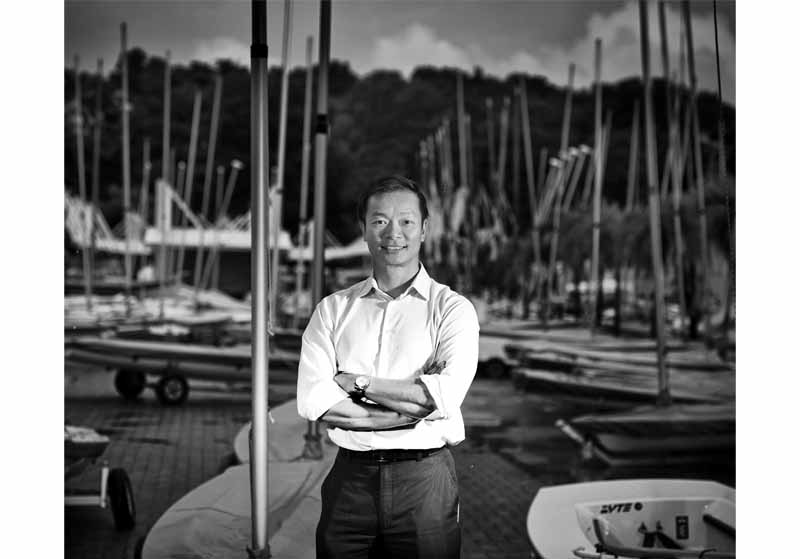 Former national sailor Benedict Tan successfully juggled sports and studies, and clinched gold in the 1994 Hiroshima Asian Games. Courtesy of Singapore National Olympic Council, image by Danny Toh from the book 50est: Stirring Stories For The Singapore Soul.
Former national sailor Benedict Tan successfully juggled sports and studies, and clinched gold in the 1994 Hiroshima Asian Games. Courtesy of Singapore National Olympic Council, image by Danny Toh from the book 50est: Stirring Stories For The Singapore Soul.
 National sailor Colin Cheng came in 15th out of 49 boats in the men’s Laser event at the 2012 London Olympics. Courtesy of Singapore National Olympic Council, image by Danny Toh from the book 50est: Stirring Stories For The Singapore Soul.
National sailor Colin Cheng came in 15th out of 49 boats in the men’s Laser event at the 2012 London Olympics. Courtesy of Singapore National Olympic Council, image by Danny Toh from the book 50est: Stirring Stories For The Singapore Soul.
 Retired national shooter Lee Wung Yew competed in three Olympics, six Asian Games and 11 Southeast Asian Games. Courtesy of Singapore National Olympic Council, image by Danny Toh from the book 50est: Stirring Stories For The Singapore Soul.
Retired national shooter Lee Wung Yew competed in three Olympics, six Asian Games and 11 Southeast Asian Games. Courtesy of Singapore National Olympic Council, image by Danny Toh from the book 50est: Stirring Stories For The Singapore Soul.
The 1990s and beyond also witnessed the start of a more professional approach towards sports in Singapore. Swimmers such as Mark Chay and Nicholette Teo headed for further education and training in the US in a bid to strike a better balance between sports and studies. Others followed, including Quah Ting Wen and of course 2014 Asian Games gold medallist Joseph Schooling – arguably the most successful product among our US-based swimmers. Also giving swimming a high profile was Tao Li, who won Asian Games gold medals in 2006 and 2010 and, even more impressively, came in fifth in the final of the women’s 100-metre butterfly at the 2008 Beijing Olympics.
Starting with Jin Junhong in the 1990s, table tennis – boosted by the import of foreign talents – rose to a whole new level. With her fourth placing in the women’s singles at the 2000 Sydney Olympics, she created a path for the likes of Li Jiawei and Feng Tianwei who eventually won Olympic medals for Singapore. Today, there is still a gap between the city state and major sporting powers but prospects are bright with the import of foreign athletes to complement local stars, investments in infrastructure and talent, monetary incentives for sporting success in major competitions, better sponsorships and a growing appreciation among people of the role of sports in society. World beaters in sports are no longer a rarity as the city-state seeks a superior standing among nations in the sporting arena – a standing which it hopes will mirror its glowing reputation in other fields that Singapore has thus far excelled in.
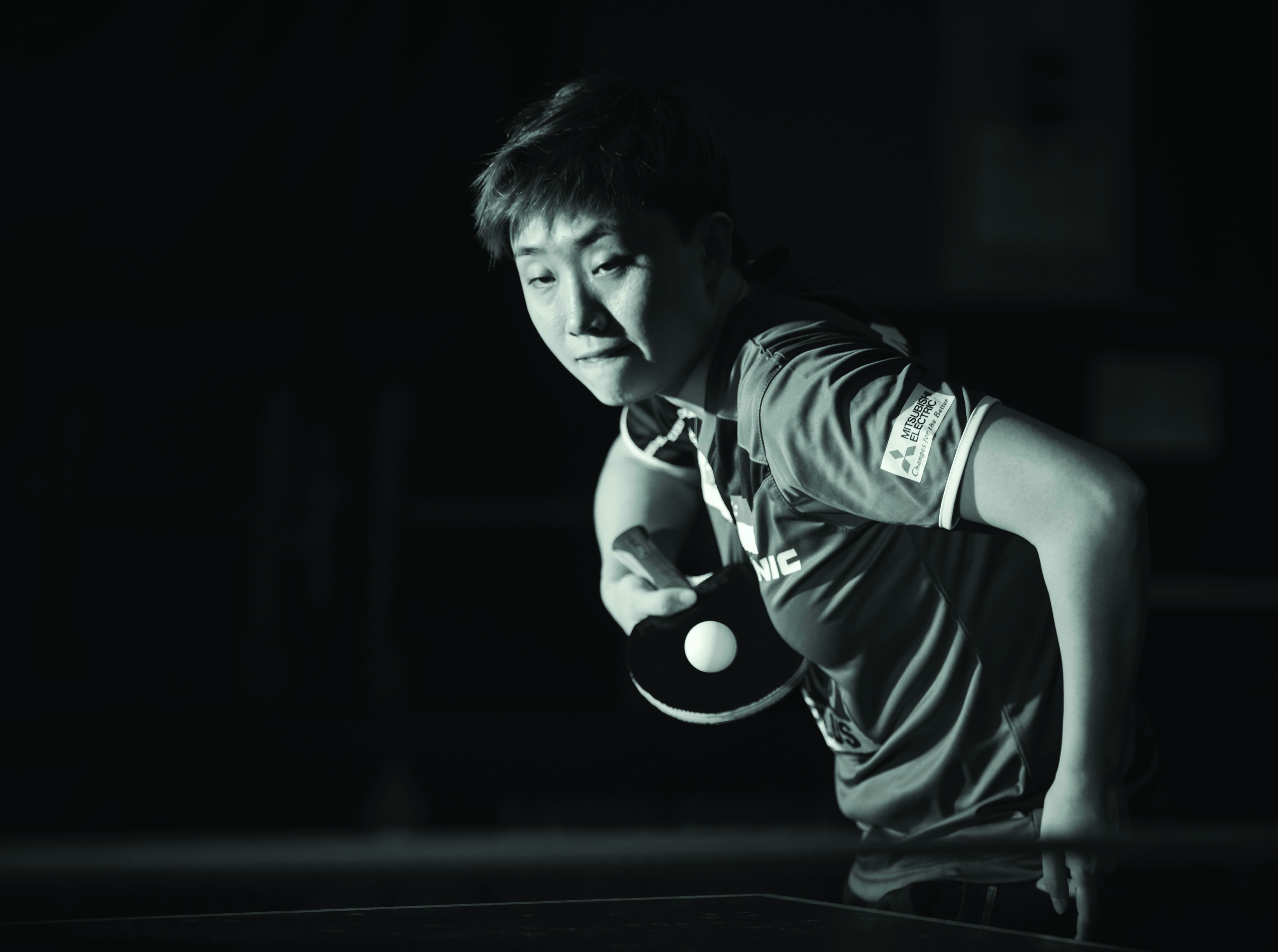 Feng Tianwei was part of Singapore’s women’s table tennis team that won a silver medal at the 2008 Beijing Olympics. She clinched bronze in the women’s singles at the 2012 London Olympics. Courtesy of Sport Singapore.
Feng Tianwei was part of Singapore’s women’s table tennis team that won a silver medal at the 2008 Beijing Olympics. She clinched bronze in the women’s singles at the 2012 London Olympics. Courtesy of Sport Singapore.
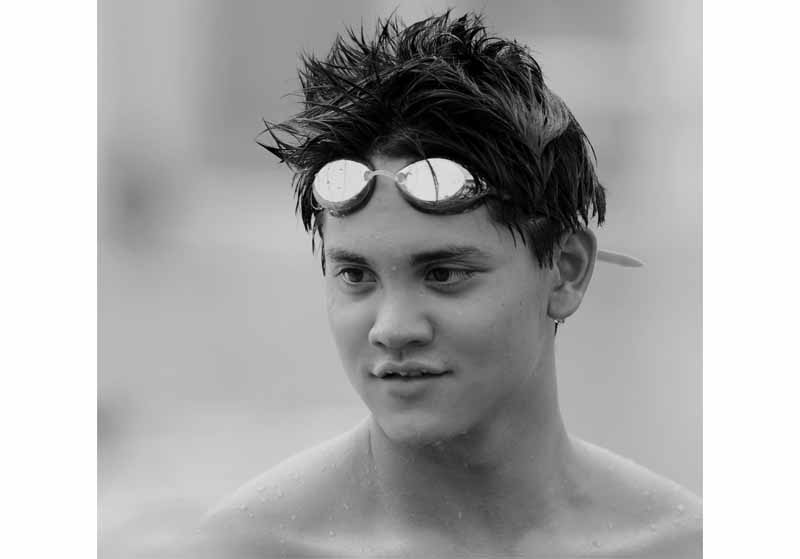 2014 Asian Games gold medallist Joseph Schooling is arguably the most successful product among our US-based swimmers. Courtesy of Singapore National Olympic Council, image by Danny Toh from the book 50est: Stirring Stories For The Singapore Soul.
2014 Asian Games gold medallist Joseph Schooling is arguably the most successful product among our US-based swimmers. Courtesy of Singapore National Olympic Council, image by Danny Toh from the book 50est: Stirring Stories For The Singapore Soul.
PARALYMPIAN WINNERS
On 15 September 2008, the Singapore national anthem was played inside an Olympic arena for the first time. Paralympian Yip Pin Xiu, afflicted by muscular dystrophy since birth, had battled against the odds to win sporting success. Competing in the Beijing Paralympics, she won gold in the 50-metre backstroke in a time of 58.75 seconds.
Equestrian Laurentia Tan developed cerebral palsy and profound deafness after birth. However, that did not stop the gutsy sportswoman from winning a silver and a bronze at the London Paralympics in 2012. For her achievements, Tan became the first disabled athlete to win The Straits Times Athlete of the Year award in 2013.
Together with swimmer Theresa Goh, who suffers from spina bifida but has been making waves with her consistent performances at swimming championships over the years, Yip and Tan have made a compelling statement for Paralympians in Singapore. Like able-bodied athletes, their quest for sporting success is serious business. It demands no less – or perhaps even more – in terms of hard work, devotion, commitment and sacrifice.
The fact that Singapore has embraced the sporting achievements of its Paralympians with as much pride as those of its able-bodied athletes is perhaps an indication of the society it has become. Significantly, when Tan won The Straits Times Athlete of the Year award, she edged out some big names in Singapore sports, including table tennis star Feng Tianwei and world champion bowler Shayna Ng.
 Laurentia Tan won a silver and a bronze at the 2012 London Paralympics. Photo courtesy of Sport Singapore.
Laurentia Tan won a silver and a bronze at the 2012 London Paralympics. Photo courtesy of Sport Singapore.
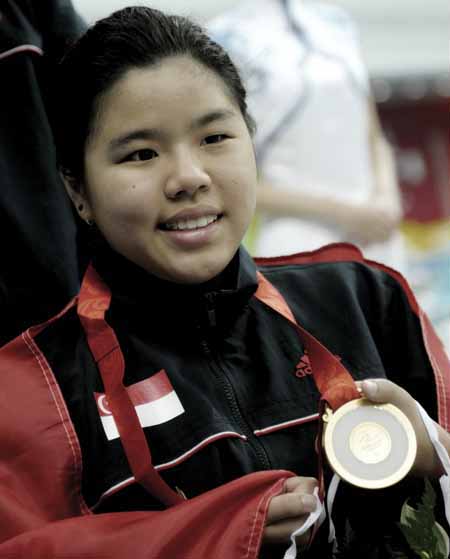 Yip Pin Xiu won the 50-metre backstroke at the 2008 Beijing Paralympics. Photo courtesy of Sport Singapore.
Yip Pin Xiu won the 50-metre backstroke at the 2008 Beijing Paralympics. Photo courtesy of Sport Singapore.
A former journalist with The Straits Times, Chua Chong Jin teaches communications at Nanyang Business School. Educated at the National University of Singapore and Cambridge University, he has written and edited various books, including 50est: Stirring Stories For The Singapore Soul for the Singapore National Olympic Council.
REFERENCES
Aplin, N. (2002). To the finishing line: Champions of Singapore Tang Pui Wah, May Klass, Janet Jesudason. Singapore: SNP Editions. (Call no.: RSING 796.4209225957 APL)
Aplin, N., et al. (2005). Singapore olympians: The complete who’s who, 1936–2004. Singapore: SNP Reference. (Call no.: RSING 796.4209225957 APL)
Chen, M. (2013, February 27). Another first for Laurentia Tan. The Straits Times, 3. Retrieved from NewspaperSG.
Chua, C.J. (2013). Gently yours, Maurice Nicholas: A true servant of athletics. Monaco: International Association of Athletics Federation. (Not available in NLB holdings)
Lim, L. (2010, May 23). Singapore’s Mr Bowling. The Straits Times, p. 39. Retrieved from NewspaperSG.
Sim, C.Y. (2008, September 16). Touching home first. The Straits Times, p. 37. Retrieved from NewspaperSG.
Voon, T. (2012, July 22). An Olympic flame that burns on. The Straits Times, p. 47. Retrieved from NewspaperSG.

